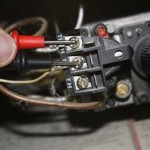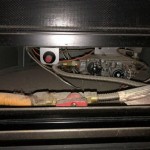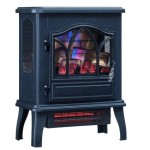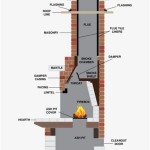Flueless Gas Fireplace Installation: A Comprehensive Guide
Flueless gas fireplaces offer a convenient and aesthetically pleasing heating solution for homes where traditional chimney systems are not feasible or desirable. Their design eliminates the need for a chimney, making them a versatile option for various living spaces. However, the installation of a flueless gas fireplace necessitates careful planning, adherence to safety regulations, and a thorough understanding of the process. This article provides a comprehensive overview of flueless gas fireplace installation, encompassing essential considerations, step-by-step instructions, and crucial safety precautions.
Unlike conventional gas fireplaces that vent combustion byproducts through a chimney, flueless models employ advanced catalytic converter technology to purify the exhaust gases. This process converts harmful carbon monoxide into carbon dioxide and water vapor, rendering the emissions safe for indoor use. This technology allows for significantly reduced installation costs and greater flexibility in placement, as it removes the limitations imposed by chimney requirements.
Key Point 1: Understanding Flueless Fireplace Technology and Safety
The core of a flueless gas fireplace lies in its catalytic converter. This component is responsible for oxidizing the harmful gases produced during combustion. The efficiency of the catalytic converter is paramount to ensuring the safety of the appliance. Regular maintenance, as outlined in the manufacturer's instructions, is crucial to maintaining its optimal performance. A malfunctioning catalytic converter can lead to the release of unsafe levels of carbon monoxide, posing a serious health risk to occupants.
Modern flueless gas fireplaces are equipped with oxygen depletion sensors (ODS). These sensors continuously monitor the oxygen levels in the room. If the oxygen concentration falls below a safe threshold, the ODS automatically shuts off the gas supply, preventing the build-up of carbon monoxide. This safety feature is essential and should never be disabled or tampered with.
It's imperative to choose a flueless gas fireplace that meets or exceeds relevant safety standards and certifications, such as those provided by recognized testing laboratories. Prior to installation, verify that the model is approved for use in the intended location and complies with all applicable local building codes and regulations. Furthermore, the room size must be adequate for the BTU output of the fireplace. Insufficient room volume can lead to a buildup of carbon dioxide and water vapor, potentially creating an uncomfortable or even unsafe environment.
Carbon monoxide detectors are mandatory in any room where a flueless gas fireplace is installed. These detectors should be strategically placed in accordance with the manufacturer's recommendations and tested regularly to ensure their proper functioning. Familiarizing oneself with the symptoms of carbon monoxide poisoning is also crucial for early detection and prompt action.
Key Point 2: Preparing for Installation: Site Assessment and Requirements
Before commencing the installation process, a thorough site assessment is necessary. This involves evaluating the room size, ventilation, gas supply, and surrounding materials. The manufacturer's specifications will dictate the minimum room size required for the specific fireplace model. Inadequate space can compromise safety and the effectiveness of the catalytic converter.
Proper ventilation is essential, even with a flueless fireplace. While these fireplaces do not require a chimney, they still require adequate air circulation to prevent the buildup of humidity and to ensure sufficient oxygen supply for combustion. The room should have a means of natural ventilation, such as a window or a vent, which can be opened to provide fresh air. The manufacturer's instructions will specify the minimum ventilation requirements.
The gas supply must be adequate to meet the fireplace's BTU requirements. A certified gas fitter should assess the existing gas line to ensure it can handle the additional load. If necessary, a new gas line with the appropriate diameter and pressure should be installed. All gas connections must be made by a qualified professional in accordance with local codes and regulations, and a gas shut-off valve should be readily accessible for emergencies.
Consider the proximity of the fireplace to combustible materials such as curtains, furniture, and wall coverings. The manufacturer's guidelines will specify the minimum clearances required to these materials. These clearances must be strictly adhered to in order to prevent fire hazards. The wall behind the fireplace should also be non-combustible or protected with a non-combustible facing material, such as tile or stone.
Electrical outlets near the fireplace might be required for features such as electronic ignition or remote control. Ensure that these outlets are properly grounded and conform to all electrical safety standards. If no outlet is available, a licensed electrician should install one.
Key Point 3: Step-by-Step Installation Process
The installation process for a flueless gas fireplace generally involves the following steps, although it's crucial to consult the specific manufacturer's instructions for the particular model. These instructions will provide detailed diagrams and procedures tailored to the appliance.
First, unpack the fireplace and inspect all components for any damage sustained during shipping. Verify that all necessary parts are present, including the fireplace unit, burner assembly, catalytic converter, decorative fuel bed (e.g., logs, pebbles), and any accessories. Report any missing or damaged parts to the retailer or manufacturer immediately.
Next, prepare the installation area. Clear the area of any obstructions, ensuring that the floor is level and solid. If the fireplace is to be mounted on a wall, ensure that the wall is structurally sound and capable of supporting the weight of the appliance. Mark the location of mounting brackets or fixing points according to the manufacturer's instructions.
Install the gas supply line. A certified gas fitter must connect the gas line to the fireplace, ensuring that all connections are leak-proof. Use a gas leak detector to check for any leaks after the connection is made. Install a shut-off valve upstream of the fireplace for emergency situations.
Position the fireplace in its designated location and secure it to the wall or floor using the appropriate mounting hardware. Ensure that the fireplace is level and stable. Connect any electrical wiring required for ignition or other features, following the manufacturer’s instructions and local electrical codes. All electrical work should be performed by a qualified electrician.
Install the burner assembly and catalytic converter, following the manufacturer's specific instructions. These components are crucial to the fireplace's operation and safety, so ensure they are installed correctly and securely. Verify that the catalytic converter is properly seated and that there are no obstructions to airflow.
Place the decorative fuel bed (logs, pebbles, etc.) according to the manufacturer's guidelines. Ensure that the decorative elements do not obstruct the burner or the catalytic converter. The placement of the fuel bed can affect the flame pattern and heat distribution.
Test the fireplace. Turn on the gas supply and attempt to ignite the fireplace according to the manufacturer's instructions. Observe the flame pattern and ensure that it is stable and consistent. Check for any unusual noises or smells. If the fireplace does not ignite properly or exhibits any problems, consult the troubleshooting section of the manufacturer's manual or contact a qualified technician.
Finally, after installation, carefully review the owner's manual and familiarize yourself with the fireplace's operation, maintenance requirements, and safety features. Ensure that all occupants of the home understand how to operate the fireplace safely and what to do in case of an emergency. Register the fireplace with the manufacturer to receive important safety updates and warranty information.
Proper ventilation is essential, even with a flueless fireplace, the room should have a means of natural ventilation, such as a window or a vent, which can be opened to provide fresh air. The manufacturer's instructions will specify the minimum ventilation requirements.
Following these guidelines and adhering to the manufacturer's instructions will help ensure a safe and efficient installation of a flueless gas fireplace, providing a comfortable and aesthetically pleasing heating solution for the home.

How To Select And Install A Gas Fireplace Log Set Fireplaces Direct Learning Center

Ventless Gas Fireplace Insert Installation Framing Wall For

Merrion Flueless Gas Fire

Built In Flueless Gas Fireplace Ing Fireplaces

If You Have A Gas Fireplace It May Or Not Chimney Flue

What Is A Ventless Gas Fireplace Experts In Gaithersbutg Md

The Eko Fires 5010 Flueless Wall Mounted Gas Fire Direct Fireplaces

Ventless Gas Fireplace Propane

Empire Innsbrook Ventless Gas Fireplace Insert 28 Woodland Direct

Are Vent Free Gas Fireplaces Safe Ventless








